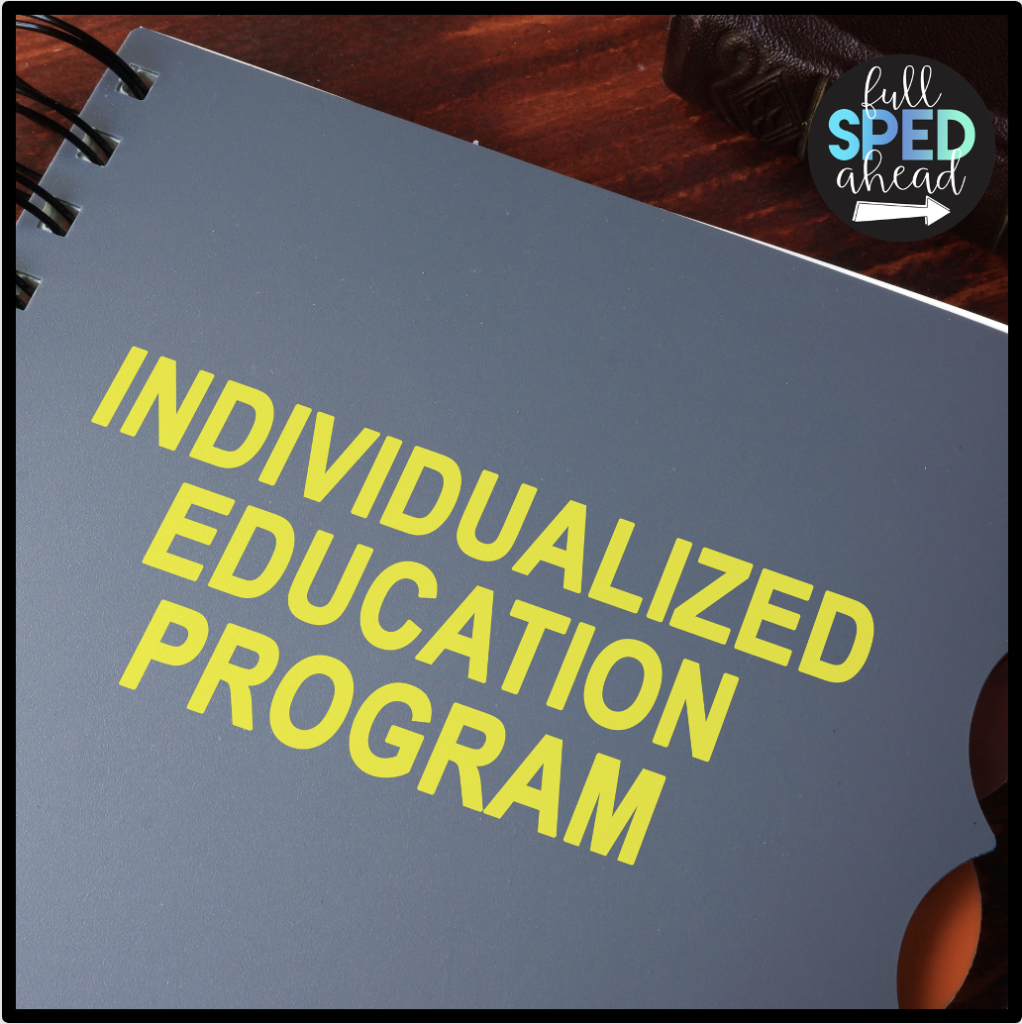As a parent, former school staff member, and advocate who has worked with families for over 8 years, I work daily on collaboration with IEP members and provide IEP tips. And while an Advocates focus on supporting the parents, I’ve come to understand the value of support and training for ALL staff as an essential component to helping students succeed. Here are my top IEP tips for supporting staff and working together effectively:
The first of my IEP tips: start by ensuring all staff understand core IEP components. Especially how to implement the student’s accommodations in different settings. A one-size-fits-all approach won’t work.

Begin by facilitating comprehensive training sessions to ensure all staff members fully grasp the fundamental components of Individualized Education Programs (IEPs). Focus on the implementation of student accommodations across various educational settings, emphasizing that a rigid, one-size-fits-all approach is ill-suited to meet the diverse needs of students with disabilities.
Encourage staff to recognize the unique requirements of each student and the necessity of tailoring accommodations and supports accordingly. Foster a collaborative environment where educators can share insights and strategies for effectively integrating accommodations into classroom practices, promoting inclusivity and equitable access to learning opportunities for all students.
Through ongoing professional development and open dialogue, empower staff to navigate the complexities of accommodating diverse learners with confidence and proficiency. Read for more IEP tips!
Grab these FREE Parent Procedural Safeguards
Send out those draft IEPs prior to meetings so parents, staff, and therapy providers cannot only provide their insight, but so they can review the data and statements of others. This way they’re prepared, and it saves valuable meeting time.
By providing these IEP documents ahead of time to families, they are given the opportunity to thoroughly review pertinent data, assessments, and statements from other team members. This proactive approach fosters a collaborative atmosphere where each participant can offer valuable insights, voice concerns, and contribute to the development of comprehensive and individualized educational plans for students with special needs.
Moreover, by allowing stakeholders adequate time to review the draft IEPs prior to meetings, valuable meeting time is optimized, enabling discussions to focus on refining strategies, addressing concerns, and ensuring alignment with the student’s unique needs and goals. Ultimately, this practice promotes transparency, collaboration, and informed decision-making, thereby enhancing the overall effectiveness and efficiency of the IEP process. Read for more IEP tips!

This section of the IEP is commonly underused, but it’s there for YOU! Document collaboration opportunities like co-teaching, training requests, regular special/general ed teacher meetings, collaborating with speech or behavior specialists, etc.
This part of the IEP is often not used much, but it’s meant for you! It’s important to write down times when teachers work together, like when they teach together in class, ask for training sessions, meet regularly to discuss students, or work with speech or behavior experts.
These are all ways teachers can help each other and help students learn better. It’s like teamwork, where everyone works together to make sure students get the support they need to do well in school. Read for more IEP tips!
Follow up with providing training for ALL staff working with the students on strategies and supports they need to provide. Training isn’t just for the teachers. Paras, Specialists, Librarians, and other staff interacting with the student should understand the student’s accommodations and what their role is in the IEP. Everything from training on safety and behavior strategies, to use of AAC and other communication devices. When scheduling makes it difficult, record sessions for those who can’t attend.
It’s important to make sure that everyone who works with the students knows how to support them in the best way possible. Training isn’t only for the teachers. Assistants, specialists, librarians, and anyone else who helps the student should understand what the student needs and how they can help.

This includes things like knowing how to keep the student safe and what to do if there’s a problem with behavior. It also means understanding how to use communication devices like AAC. Sometimes, it’s hard for everyone to attend training sessions because of busy schedules. In those cases, it can be helpful to record the sessions so that people who couldn’t be there in person can still learn from them. This way, everyone can work together to support the student and help them succeed. Read for more IEP tips!
Need help with IEP Documentation, grab these forms!
5. IEP Tips: Leverage District Support
Invite specialists to observe students and provide fresh recommendations and training on meeting needs. Teams are hesitant to reach out to the district but having a fresh pair of eyes review data or conduct observations, and then provide updated strategies, is an invaluable resource.
It’s beneficial to invite specialists to observe students and offer new insights and suggestions for meeting their needs. Sometimes, teams might feel hesitant to reach out to the district for support, but having someone with expertise review data or conduct observations can bring valuable perspectives.
These specialists can offer updated strategies and approaches based on their observations, which can be incredibly helpful in addressing the unique needs of each student. By welcoming specialists into the team and embracing their recommendations, educators can ensure that they are providing the best possible support and resources to help students thrive academically and socially. Read for more IEP tips!
6. Prioritize Parent Collaboration
Grab this FREE Parent Communication form for the best IEP Tips!
Beyond regular communication and providing a copy of the proposed draft IEP at least 3 days ahead of the meeting, encourage parents to provide detailed input on their top concerns. Not just academics but ask what worries them about their child’s future. How can you work together to effectively prepare the student for future independence?
In addition to regular communication and sharing the proposed draft IEP in advance of the meeting, it’s important to encourage parents to provide detailed input on their top concerns regarding their child’s education and future. While academic progress is crucial, it’s equally important to address broader concerns about the child’s future and transition to independence.
By asking parents about their worries and aspirations for their child’s future, educators can gain valuable insights into the family’s priorities and goals. This collaborative approach allows educators and parents to work together more effectively in tailoring the IEP to meet the student’s academic, social, and life skills needs.
By fostering open communication and addressing both immediate and long-term concerns, the IEP members can create a comprehensive plan that supports the student’s growth and development in all areas of their life. Read for more IEP tips!
7. And most importantly – Involve the student!!!
Invite them to share what they are concerned about and what personal goals they have. Make sure they have a list of their accommodations on hand. They can’t ask for accommodations if they don’t know what they are. Empower them to advocate for themselves!
Encourage parents and students to openly share their concerns and articulate their personal goals for their child’s education and future. Providing a platform for parents to express their worries and aspirations allows them to feel heard and valued as integral members of the IEP roundtable. It’s essential to ensure that parents have a clear understanding of their child’s accommodations and supports by providing them with a comprehensive list.
Empowering parents with this knowledge enables them to advocate effectively for their child’s needs during IEP meetings and throughout their educational journey. By fostering a collaborative environment where parents feel empowered to voice their concerns and advocate for their child, educators can work together with families to develop tailored strategies and supports that promote student success and well-being. Follow Sandy for more IEP tips!
With training, communication, and collaboration, we can level the playing field, so every IEP team member is equipped to help students excel. If you want to read more IEP tips, check out the blogs below.
Collaboration in an IEP Meeting
Advice for IEP Minutes and IEP Tips
How to Write IEPs Collaboratively
Advice for What To Do Before an IEP Meeting
IEP Tips for Parents
What are you looking for?
COPYRIGHT © 2025 Full SPED Ahead